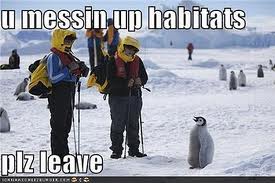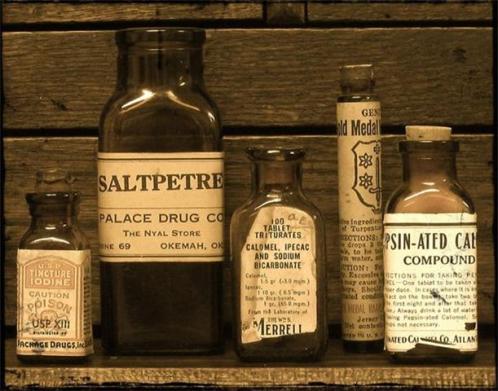Archive for June, 2012
30 Jun
Retro
29 Jun
Make you Fink on Friday

Kept in the dark and fed on bullshit
The more I read, the more I find stories that are not being told.
By lies or omission, we are being treated like mushrooms; kept in the dark and fed on bullshit!
It’s so prevalent that it’s hard to pinpoint because there are so many issues. GM foods, banking, Wall Street, wars, military, scandals, HFCS, labeling, local government, the government, fracking, unleaded gasoline. The list could just go on and on ad nauseum.
Here’s another one…
Toxic oil and gas waste being dumped in wells with thousands of violations
There is a new must-read investigation into documented environmental contamination of groundwater around the country from oil and gas waste that has never before been brought to light. NRDC has been sounding the alarm about the dangers of oil and gas waste. It can be very toxic, and can even be disposed of in residential neighborhoods, including people’s backyards–yet it is not subject to hazardous waste laws in the U.S. due to special political favors granted to the influential oil and gas industry. Because of this, NRDC asked the EPA to write new rules for toxic oil and gas waste.
The recent investigation by ProPublica, published in Scientific American, underscores the dramatic need for strong new safeguards to protect our drinking water from toxic oil and gas waste. The investigation focusses on underground injection of oil and gas waste. Current standards applicable to underground oil and gas waste disposal are inadequate to prevent toxic wastes from contaminating groundwater. Now ProPublica provides a lot more concrete evidence of this fact.
It is a long and comprehensive investigative piece; the reporter reviewed documents related to more than 220,000 well inspections. I encourage you to read the entire thing, but I will post some of the most frightening findings here (keep in mind that these wells are drilled through aquifers that are underground sources of drinking water):
- Experts are concerned and make clear that no one fully understands the current risks. A retired EPA expert in underground injection stated: “In 10 to 100 years we are going to find out that most of our groundwater is polluted, A lot of people are going to get sick, and a lot of people may die.”
Source: Switchboard Read more
Opinion:
Just one more item to be added into the long, long list of things we are not told. Issues that are vital to our very survival and nobody knows about them.
 Here we have water, the most precious commodity on the planet, essential for our survival and it is being slowly poisoned because no one regulates the disposal of highly toxic oil and gas waste.
Here we have water, the most precious commodity on the planet, essential for our survival and it is being slowly poisoned because no one regulates the disposal of highly toxic oil and gas waste.
“It is not subject to hazardous waste laws in the U.S. due to special political favors granted to the influential oil and gas industry.”
Once again we see the politicians ‘granting favours’ to the industry regardless of the problems it could generate. Governments don’t care about you and I, they don’t give a tinker’s cuss.
When will we finally be told the truth?
Hopefully, before it’s too late.
28 Jun
CTWW – Update
How to avoid paper towels…
Take the advice of our Foul Bachelor Frog
You can get more helpful advice from him every Tuesday on
27 Jun
Change the World Wednesday – 27th June
Sometime later on Wednesday… I began this post (the AA spoof below) at 5:50am. My alarm went off at 5:30, and nothing, but NOTHING happens before that first cup of coffee.
I did participate in last week’s challenge, by NOT driving anywhere. The results are not as spectacular as one might think, because I don’t go anywhere apart from work, the supermarket and on Sunday I treated myself to dinner out, oh and a walk to the local market.
So, I didn’t drive 141 miles, I didn’t spend $61.88 and I didn’t emit 14lbs of pollutants.
Because I don’t have a car, I chose a model from my past. It was suggested I should use a Hummer at 12 miles to the gallon, but I figured that would be stretching the imagination a bit, so I chose my old favourite, 1956 De Soto with a gas gobbling 380 cubic inches (that equals about 6 cars with a 1,000cc engine) doing 18miles/gallon on a good day.
Just for your interest, the median price for gasoline here in Brazil is $6.82/gal.
On with Wednesday. I just had a break for lunch. Living alone one doesn’t just have lunch appear magically on the table; there needs to be a certain amount of physical effort, and then there’s the dishes…
 Change the World Wednesday from Reduce Footprints.
Change the World Wednesday from Reduce Footprints.
.
Those old evils disposable stuff…

Paper towels are an evil, addictive waste of trees
Hello, my name is Argentum…
“Hello, Argentum”
I am addicted to paper towels, but I haven’t used one in four days.
*Pause for effect while audience claps*
I had to, you see I was making a white sauce and my nose began to run, it was an emergency! I couldn’t abandon the white sauce and run through the house for my old T-shirt rag. I have the ‘flu! I know I shouldn’t have them in the house, they are such a temptation. The roll has been sitting on the kitchen shelf for months, almost a year. I look at it, I hanker for the days when I could use one without guilt. But, I have resisted, each time my trembling hand reached out for that soft white dimpled chlorine bleached absorbent texture, I would catch myself and use the cold damp cloth from the kitchen sink instead and I would feel so ashamed that I had nearly succumbed to temptation, then I would make fresh Brazilian coffee and the world would be safe from the evils of paper towels; at least until the next spill, the next crisis.
It’s true. I do have a roll of paper towels in the kitchen. It has been there since the last similar ‘paper’ challenge and does get used for timely emergencies. But the life of a single roll of paper towels in my kitchen is about a year. They do get used for draining the lard from a deep fry, there is nothing like paper for that. If I have a paper bag (‘sack’ for our American cousins) I use that instead.
I don’t entertain, I don’t go on picnics, so I don’t have disposable stuff in the house. I don’t usually use paper towels, except for the odd emergency listed above.
The last time I had a ‘pet’ emergency, was when da Meow, my previous moggy, decided to play ‘Chuck Chunder’ under the bedroom table. I simply got the kitchen shovel and swept the oubliette with the yard broom and hosed it off into the outside drain. Apart from a serious gag myself, no damage. The same thing happened when he presented me with a huge dead rat in front of the backdoor; cats do like to show off their prizes. da Meow was no different, he was a good ratter, at least one a day sometimes two from the canal along the street. I just swept it up and buried it in the compost heap, three months later, no rat and good quality compost.
Splatters and spills are always wiped up with a floor cloth with a little kitchen detergent for the greasy ones. My floor cloths are old clothes saved for the purpose.
So truly, I have little use for disposable stuff; the challenge will be easy.
26 Jun
Here, there be Paradise
But, not for much longer.
.
Yes, in New Zealand there is Paradise.
Now there are probably lots of places around the world that go by the name paradise, but few are truly Paradise, none of them approach the levels of Shangrila found in Paradise, New Zealand.
.
Destruction plans for paradise
Yes, there are plans to destroy Paradise.
“There is a place in New Zealand called Paradise. It is located north of the end of the world, in the endless virgin forests past Glenorchy, the last township on Lake Wakatipu. Narrow unsealed roads lead to the access points of some of the famous Great Walks of New Zealand, like the Routeburn Track.”
Read more about them on The Green Planet Blog, the post dated 24th June (The blog doesn’t appear to have direct links to posts).
You can read more about Paradise on: The One Ring.net

Paradise, a place untouched by technology.
Image: TravelPod

Pristine beauty of Thunder Creek Falls
Image: Jeff’s Blog more great photos there
Destruction in the name of progress, it’s not needed The building of this highway must be stopped at every turn. The world needs places like Paradise, the future generations need places like Paradise to show their kids that this was what the world used to look like.
26 Jun
And another species leave the planet
Chelonoidis nigra abingdoni
R.I.P.
.
Last Pinta giant tortoise Lonesome George dies

Lonesome George, a giant tortoise, was believed to be the last of his subspecies
Staff at the Galapagos National Park in Ecuador say Lonesome George, a giant tortoise believed to be the last of its subspecies, has died.
Scientists estimate he was about 100 years old.
Park officials said they would carry out a post-mortem to determine the cause of his death.
With no offspring and no known individuals from his subspecies left, Lonesome George became known as the rarest creature in the world.
For decades, environmentalists unsuccessfully tried to get the Pinta Island tortoise to reproduce with females from a similar subspecies on the Galapagos Islands.
Park officials said the tortoise was found dead in his corral by his keeper of 40 years, Fausto Llerena.
While his exact age was not known, Lonesome George was estimated to be about 100, which made him a young adult as the subspecies can live up to an age of 200.
Lonesome George was first seen by a Hungarian scientist on the Galapagos island of Pinta in 1972.
Environmentalists had believed his subspecies (Chelonoidis nigra abingdoni) had become extinct.
Lonesome George became part of the Galapagos National Park breeding programme.
After 15 years of living with a female tortoise from the nearby Wolf volcano, Lonesome George did mate, but the eggs were infertile.
He also shared his corral with female tortoises from Espanola island, which are genetically closer to him than those from Wolf volcano, but Lonesome George failed to mate with them.
He became a symbol of the Galapagos Islands, which attract some 180,000 visitors a year.
Galapagos National Park officials said that with George’s death, the Pinta tortoise subspecies has become extinct.
They said his body would probably be embalmed to conserve him for future generations.
Tortoises were plentiful on the Galapagos islands until the late 19th century, but were later hunted for their meat by sailors and fishermen to the point of extinction.
Their habitat furthermore suffered when goats were introduced from the mainland.
The differences in appearance between tortoises from different Galapagos islands were among the features which helped the British naturalist Charles Darwin formulate his theory of evolution.
Some 20,000 giant tortoises of other subspecies still live on the Galapagos.
Source: BBC News
25 Jun
Monday Moaning
This is an extension of my Chew on this post last Tuesday, where I looked at motor racing being an evil user of gasoline and a huge source of hot house gases.
Why NASCAR Needs To Think About Energy Use
 A couple of weeks ago, I wrote about possible ways that climate change could effect baseball. This time I want to talk about how a sport can impact the climate.
A couple of weeks ago, I wrote about possible ways that climate change could effect baseball. This time I want to talk about how a sport can impact the climate.
From constant travel to keeping the stadium lights on, every sport is energy intensive. But NASCAR — in which drivers race vehicles 500 miles at speeds of 200 miles per hour — takes energy intensity to a whole new level.
NASCAR is arguably the second most popular sport in America. Though it lacks some of the broad appeal of other sports, the 75 million people that watch it each weekend put the sport behind only the NFL in popularity. And that popularity has its environmental impact beyond what the casual fan might think about.
For example, NASCAR race cars are not subject to the EPA regulations that govern other vehicles on the road. They do not have catalytic converters mandated for every other car on the road. And until 2007, NASCAR used leaded gas — a toxic fuel that has hasn’t been used in the rest of the U.S. since the 1980′s.
On average, NASCAR cars get between 2 and 5 miles per gallon of gas. How Stuff Works explains:
“In a single typical NASCAR race weekend, with more than 40 cars at high speeds for 500 miles (804 kilometers) — plus practice laps — at 5 mpg of gas, you’re looking at, conservatively, about 6,000 gallons (22,712 liters) of fuel
. Each gallon burned emits about 20 pounds (9 kilograms) of carbon dioxide, so that’s about 120,000 pounds (54,431 kilograms) of CO2for a race weekend
. Multiply that by roughly 35 races per year, and NASCAR’s annual carbon footprint is in the area of 4 million pounds (1.8 million kilograms).”
Four million pounds certainly isn’t going to tip the climate over the edge, but its still a heck of a lot of CO2 spewed into the atmosphere. And that number doesn’t even include the fleet of diesel powered support vehicles that accompany each racing team at every event around the country.
Source: ThinkProgress Read more
Opinion:
Not being American, of course, I forgot completely about NASCAR, but it certainly is a part of the issue.

…and when the pumps run dry, then what?
All these motor sports are so much an ingrained part of ‘sports’ that we fail to stop and think of the impact on the environment.
Even if the amount of CO2 is not enough to tip the global warming scales, the wastage of fuels is bringing us closer to critical availabilty.
Let’s face it, if private motoring is banned, who will be the first to complain about having to walk to the supermarket?
There needs to be some serious accounting done regarding the value of a few ‘thrills and spill’ against the future of fuel.
The only solution is banning all such sports.
24 Jun
Nature Ramble
 Usually the news is bad, especially for those facing extinction. But, sometimes there is a ray of light that illuminates the future.
Usually the news is bad, especially for those facing extinction. But, sometimes there is a ray of light that illuminates the future.
This weeks Nature Ramble is about one of those faint rays of hope.
.
With a face that only a mother could love…
.
Endangered Sumatran rhinoceros born in captivity

Ratu’s pregnancy lasted about 16 months
A Sumatran rhinoceros – one of the world’s most endangered species – has given birth at a sanctuary in Indonesia.
Conservationists at the Sumatran Rhino Sanctuary in Way Kambas National Park said the mother, Ratu, and her male calf were both “very well”.
It is only the fourth recorded case of a Sumatran rhino being born in captivity in a century.
There are thought to be fewer than 200 alive in Indonesia and Malaysia.
Their numbers have dropped by 50% over the past 20 years, largely due to poaching and loss of habitat.
‘Big present’
A spokesman for Indonesia’s forest ministry, Masyhud, told the AFP news agency that Ratu’s labour had gone “smoothly and naturally”.
“It’s really a big present for the Sumatran rhino breeding efforts as we know that this is a very rare species which have some difficulties in their reproduction,” he added.
“This is the first birth of a Sumatran rhino at a sanctuary in Indonesia.”
It was Ratu’s third pregnancy. The previous two ended in miscarriages.
The father of the baby rhino, Andalas, was born at Cincinnati Zoo in the US in 2001 – the first Sumatran rhino to be delivered in captivity in 112 years.
Source: BBC News Read more
22 Jun
Make you Fink on Friday
Rio summit: Little progress, 20 years on

Twenty years after the first Rio summit, campaigners say this global gathering has failed to achieve similar results
On the final day of the UN sustainable development summit in Rio, UN chief Ban Ki-moon has urged governments to eliminate hunger from the world.
The secretary-general said in a world of plenty, no-one should go hungry.
The final phase of the summit has seen pledges from countries and companies on issues such as clean energy.
But a number of veteran politicians have joined environment groups in saying the summit declaration was “a failure of leadership”.
And UK Deputy Prime Minister Nick Clegg described the outcome as “insipid”.
The meeting, marking 20 years since the iconic Earth Summit in the same city and 40 since the very first global environment gathering in Stockholm, was aimed at stimulating moves towards the “green economy”.
But the declaration that was concluded by government negotiators on Tuesday and that ministers have not sought to re-open, puts the green economy as just one possible pathway to sustainable development.
Mary Robinson, formerly both Irish president and UN High Commissioner for Human Rights, said it was not enough.
“This is a ‘once in a generation’ moment when the world needs vision, commitment and, above all, leadership,” she said.
“Sadly, the current document is a failure of leadership.”
The former Brazilian President Fernando Cardoso, who chaired the 1992 Earth Summit, said the declaration did not do as much for environmental protection as for human development.
“This old division between environment and development is not the way we are going to solve the problems that we are creating for our grandchildren and great-grandchildren,” he said.
“We have to accept that the solutions to poverty and inequality lie in sustainable growth, not growth at all costs.”
Mr Ban had hoped the summit would take firmer steps towards ensuring the poor had access to water, food and energy.
However, his flagship Sustainable Energy for All initiative was merely “noted” in the text, not enthusiastically endorsed.
Source: BBC News Read more
Opinion:
Sadly, the Rio Summit on sustainability was a waste of time and money. When you balance the priorities less was achieved in 2012 than in 1992, and nothing has been done since 1992, so we can fully expect less to be done after 2012.
The answer to my last question on yesterday’s post:
No they won’t!
The world’s leaders are more interested in feathering their own nests by advancing development at all costs, even if those costs are too high for the planet to pay.
The chance was there, they blew it.
They can’t get it into their thick heads, that there will not be another chance. Twenty years on will be too late; they will see that in twenty years and they will come to understand that 2012 was the last chance. There will be wringing of hands and gnashing of teeth in the future, but the door of opportunity was closed, it will all be in vain.
Brazil’s ex-President Fernando Cardoso was right, “This old division between environment and development is not the way we are going to solve the problems that we are creating for our grandchildren and great-grandchildren.”
The theme of Rio +20 was ‘sustainability’, and here’s the joke; the initiative was merely ‘noted’ in the text.
There is only one thing left to say:



























Recent Comments